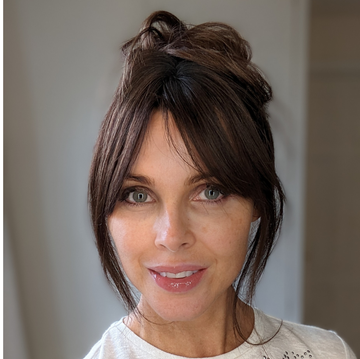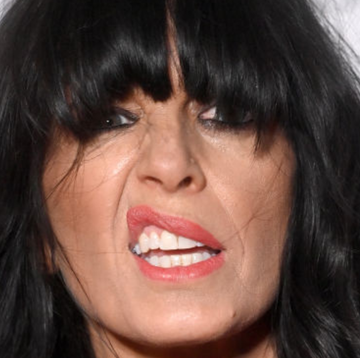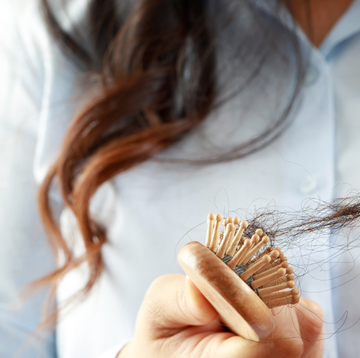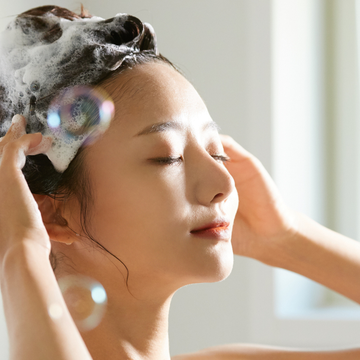No matter what hair style or length you have, you want it to be healthy and strong from root to tip. So what can you do if yours has become rough, dull, frizzy and generally impossible to style? We’re continually bombarded with hair repair products promising miracles for shredded and split lengths, but do they really work, and how can you know what’s right for your hair? We’ve asked the experts to unpick the truths from the myths, reveal if you really CAN repair damage (spoiler alert: it’s possible!) and know when it’s time to cut your losses. And even if it is time to lop off a few inches, short hair has never been so chic and fashionable. So panic over, whatever the prognosis.
What causes damage to hair?
There are three main culprits, but you might be surprised by the details, says hair expert Tom Smith. “There’s heat damage from hot tools, but people don't realise it can also come from very hot use of water, like hot showers."
Chemical damage takes many forms, he notes. “It’s not just hair colours and bleach – things like perms, straightening treatments, kerosene treatments and chlorine exposure have the potential to cause chemical damage.” UV rays also chip away at the physical structure of hair by damaging the external keratin layer.
Mechanical damage is a third and often overlooked culprit. “That’s daily wear and tear, from brushing the hair harshly to tight ponytails or braids which can cause traction alopecia. Even the way you sleep can have an impact. If you're waking up with tangles every morning, that friction on your pillow is probably causing mechanical damage."
"People also don't realise their hair is getting caught in necklaces, buttons at the back of blouses or under the strap of a handbag. You can often get mechanical damage from the wear and tear of the hair being caught in the same place repeatedly every day. Twiddling hair through anxiety or boredom is another cause."
Is my hair damaged or just dry?
Dry hair is a very common issue, says Philip Kinglsey trichologist Anabel Kingsley. “Hair can lose moisture through heat styling, changes in temperature, frequent use of dry shampoo, using the wrong shampoo for your hair texture, or simply because your scalp produces less oil. Wavy and curly hair textures are naturally drier, and hair generally becomes drier as we age.”
If hair is dry, you need to nourish and hydrate your hair, she adds. “Hair oils, when used correctly, replace lost lipids and lock in essential moisture.” Celebrity hairdresser John Vial is also a huge advocate for oils. “Imagine you've got a piece of dehydrated hay – it would be dull and snap very easily. But if you douse it in oil, it becomes much more malleable and glossy. We have to think about hair in the same way.”
Hair often looks frizzy because it’s dehydrated, not because it’s actually broken, he notes. “In this case, “get a natural, organic cold-pressed oil and douse your hair. Leave it in all day or overnight. It may not smell nice, but the longer it’s soaked, the more supple it becomes”.
Although dryness is a separate issue to damage, do be aware that one can lead to the other. “When hair is dry, it’s more prone to damage, especially when left untreated,” says Anabel.
How can I tell if I actually have damaged hair?
A good test to try at home is the sink test, says Tom. “You take a single strand of your hair and put it in a glass of water. If, after five minutes, that strand of hair has sunk to the bottom, that means the hair has a high porosity. If it keeps floating on top, it means it has a low porosity. Knowing this is important: if you've got a high porosity, chances are your hair has experienced damage and needs more moisture.”
What is damaged, porous hair and what can I do about it?
Highly porous hair has raised and/or damaged cuticles, and both loses and gains moisture quickly, says Anabel. “Highly porous hair can get stuck in this cycle, as frequently taking in and losing moisture causes the cortex to contract and expand repeatedly, causing further structural damage. Hair like this requires treatment to replace and repair broken bonds within its internal structure, and also repair the damaged outer cuticle”
But hair is dead, can I really repair it?
Yes, the follicle is the only living part, but you can make a huge difference to your ‘dead’ hair’s physical structure and strength with bond builders. “Imagine the inside of your hair as a ladder with rungs,” says Tom. “These rungs which are actually internal disulphide bonds, holding chains of proteins together.” When hair is damaged, these rungs start to break, but “what bond builder treatments do is hold those proteins together again. You can certainly repair hair to a degree, but there is a point of no return when it needs cutting off”.
In terms of repair products, “Olaplex is my favourite bond builder, because it’s repairing the hair end to end,” Tom says. You can also read the Good Housekeeping Institute guide to the best bond builders here.
What’s best for repair: moisture, protein or bond building?
Actually, balancing all three elements is really the key to healthy hair for everyone, says Tom. “Bond builders are typically the foundation of all repair. I’d recommend using them at least every third shampoo, especially if your hair is bleached, and also getting bond builders mixed into the colour at salon appointments. If you use the Olaplex No.0 and No.3 formulas together, you’re getting the strongest possible bond repair at home”.
Powerful as they are, “bond builders aren’t enough by themselves - there has to be that moisture element somewhere,” says Tom. “One of the tricks I share with my clients is to alternate Olaplex No.3 with Philip Kingsley Elasticizer. It’s my favourite for bringing moisture, suppleness, elasticity and silkiness back to highly porous hair. These are both pre-shampoo treatments so every use one of these alternatively every third shampoo. More frequently is also fine - just start here and see what best suits your hair over time.”
Protein treatments strengthen hair in a different way to bond builders, so you’ll want to use both. “A protein, peptide or amino acid based treatment is best when left on for a few minutes and rinsed out as your last step in your hair wash routine, instead of your conditioner. My favourite masks are evo Mane Attention and Virtue Restorative Treatment Mask. When you’re trying to actively repair your hair, using one every wash for a few washes is great, and then gradually reduce back to normal use of your regular conditioner then perhaps the protein mask every three washes.”
Can I stick split ends back together?
There is no cure for split ends, says Anabel. “If not trimmed they will continue to travel further up the hair shaft, causing breakage further up. This is why we created Bond Builder Split End Remedy which temporarily seals split ends for up to three wash cycles to give ends a smoother appearance and prevent splits travelling.” However, it’s literally a sticking plaster, not a solution.
When is it best to chop off your hair?
Speak to your hairdresser for an in-person assessment. Thanks to advances in technology, it’s far less likely that your hair is totally beyond help and needs hacking off, says John. A trim may well suffice to get nip damage in the bud. “Think of damaged hair as a fraying rope: you just need to cut off the fraying ends to seal it”.
The rest of the hair can be repaired to a large extent, and a conservative snip now help you get longer, stronger hair in the future. “Regular trims to get rid of split ends will help hair reach its potential length," says Anabel. "If you’re noticing a lot of split ends or irregular lengths within your hair now, then a trim or chopping off a few inches may be beneficial."























